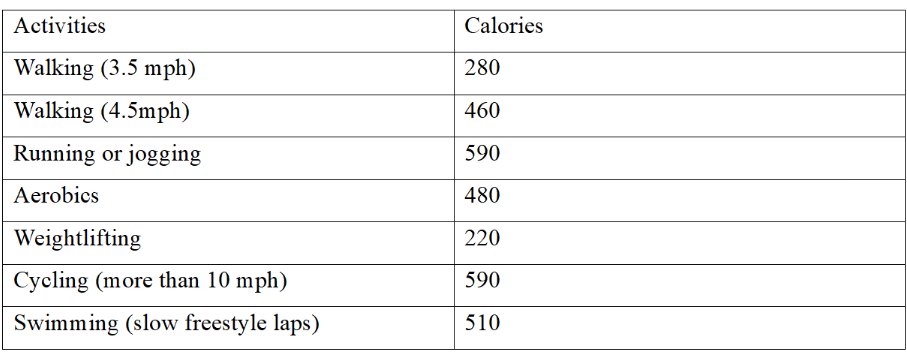Walking has become a habit of mine even though maintaining consistency is challenging. I always prefer to walk instead of taking the car. Before writing this blog, I knew walking provides many health benefits, refreshes the mind, and boosts our mood. However, sometimes, I find it a challenging and somewhat boring task to perform. In the hope of making, it enjoyable, I add fun activities such as visiting a friend, window shopping, and visiting second-hand shops as it needs more walking to go through all the stations, go to school, get groceries from different supermarkets, etc to execute the task somehow.
On days when it is hard to get out, I challenge myself by cycling to neighbourhoods or the forest to explore and discover new places and paths and also to take pictures to keep myself motivated and physically active.
I find great comfort and relief in Chi Walking, especially walking in peaceful, and serene landscape as the forest. Chi Walking is more like a meditation practice to me, it helps me clear my thoughts, connect and talk with my inner self, focus on the presence, reflect, appreciate what life can offer me, and enjoy the beautiful nature. Thus, walking is a method for me to find happiness, most importantly, Myself.
Walking and its health benefits:
A great way to improve your overall health for free and without any equipment required is Walking. By walking for at least 30 minutes a day bones are strengthened, excess body fat is reduced, muscle endurance and power gets boosted, cardiovascular fitness increases, the risk of developing heart diseases such as stroke decreases, improved flexibility of joints and muscles, prevents diabetes type 2, osteoporosis, balances high blood pressure (hypertension), high cholesterol and many other health problems.
Walking is a physical activity that does not have to be vigorous and can be done anywhere and anytime even indoors while doing household tasks including cleaning the house or getting other necessary tasks done such as buying groceries while outdoors. By accomplishing one task on the to-do list, we sometimes unknowingly add walking to our daily routine.
Walking is considered weight-bearing exercise as one carries their body weight throughout the process, meaning, it is a great way for physical exercise for one who has not done any exercises for a long time, is overweight, or is elderly.
Emotional and mental health benefits of walking:
In addition to physical health benefits, walking has tons of emotional and mental health benefits. Walking increases and betters blood circulation to the brain and the body, as a result, it boosts mood and has a positive influence on the central nervous system eventually the body’s response to stress decreases and one feels/experiences less stress. Furthermore, walking improves sleep quality, increases physical and mental strength, reduces exhaustion, beats off depression and anxiety, boosts self-esteem, and increases mental alertness.
How to make walking a part of our daily routine:
In the beginning, incorporating walking into your daily routines or walking for 30 minutes can be challenging for those new to physical activity or who have been inactive for a long time. However, starting with 5 minutes and gradually extending the duration as pleased, makes walking an accomplishable goal. Once one walks day-to-day as consistent practice. Once you consistently walk, it naturally becomes a habit to walk a certain number of miles daily.
Some tips on how to integrate walking into our daily routine:
There are various ways, you can include walking daily routine. For instance, one can take the stairs instead of the lift, walk to the supermarkets to get groceries or general shopping and walk around neighborhoods alone or with family and friends to make it more memorable and enjoyable. Challenge yourself to walk to school, work, parties, friends’ houses, or any other places that require your visit. Keep yourself an activity diary to get yourself motivated, join walking clubs, walk up hills to stay active as well as engaged, and wear a pedometer/step counter to get inspired as it tracks and accumulates every step taken by you. The recommended average number of steps daily for an adult is about 10,000 or more. However, taking less than the average number of steps daily is also fine and an accomplishment for better health as every step is counted for improvement of overall well-being and physical fitness.
How to make walking pleasant, enjoyable, and less boring?
As walking is a great way to achieve better health, boost mood, and get some fresh air, on the other hand, it may become boring. There are numerous tips on how to make walking memorable, enjoyable, plus fun. Walking can be a great way to explore the neighborhoods or even the entire city by changing the walking path often to explore new places and make walking a more exciting experience. Setting personal goals for walking, for example, losing weight or being physically active to live a healthier lifestyle can keep you focused and motivated to achieve your goals. Walking or engaging in other physical activities becomes more fun when you walk with someone you like. Invite and encourage your friends or family to walk with you to get the opportunity to bond with them while staying physically active and healthy. Be creative and entertain yourself by listening to your favorite music or an audiobook. Moreover, attempt to bring change by mixing up your daily schedule for better and fresher experiences. For instance, altering the exercise/walking times enables you to experience new perspectives and add more excitement to the journey.
Some tips on correct walking techniques:
The use of correct walking techniques makes the journey successful and pleasant. Swing your arms freely, check the weather beforehand, wear comfortable clothes, shoes, and socks suitable for the weather, stand straight as much as possible, step from heel to toe, keep your head up, and keep yourself hydrated.
Tips on how to be safe while walking:
It is recommended to see your health professional before starting walking activities or any other physical exercises if you are obese, over 40 years old, and haven’t had any physical exercise for a long time. Warming up before starting walking improves blood flow, prepares the body, and prevents joint and muscle damage. Wear comfortable clothing, a hat, and sunscreen, prevent accidents by wearing reflective clothing, walk on the sidewalks or a safe path, carry your phone with a safety app downloaded, and look around for possible unexpected hazards such as cliff edges.
Types of walking: Walking is a simple process but its health benefits vary according to the type.
Chi walking: Chi walking is a type of walking that can be used as a meditation method for calming the mind, reducing stress, clearing thoughts, and improving mood. Brisk walking: This walking method takes 100 steps per minute and tends to burn calories depending on the person’s weight.
Table: Calories

Stroll walking: One can benefit from various health benefits such as healthy bones and muscles, and control weight by walking for 1 hour daily.
Nordic walk: Nordic method of walking is done by putting the upper body and legs in action, using special poles. By this method of walking around 20% of calories are burned compared to walking without poles, improves posture, strengthens abdominal muscles and back, less impact on joints.
Race walking: It is a specialized form of walking that is done as a sport by following certain techniques and rules. It has many health benefits such as reducing the risk of developing many health problems for instance heart disease, diabetes type 2, dementia, improving quality of life as well as increasing life span.
Written by: Madina Haidari

